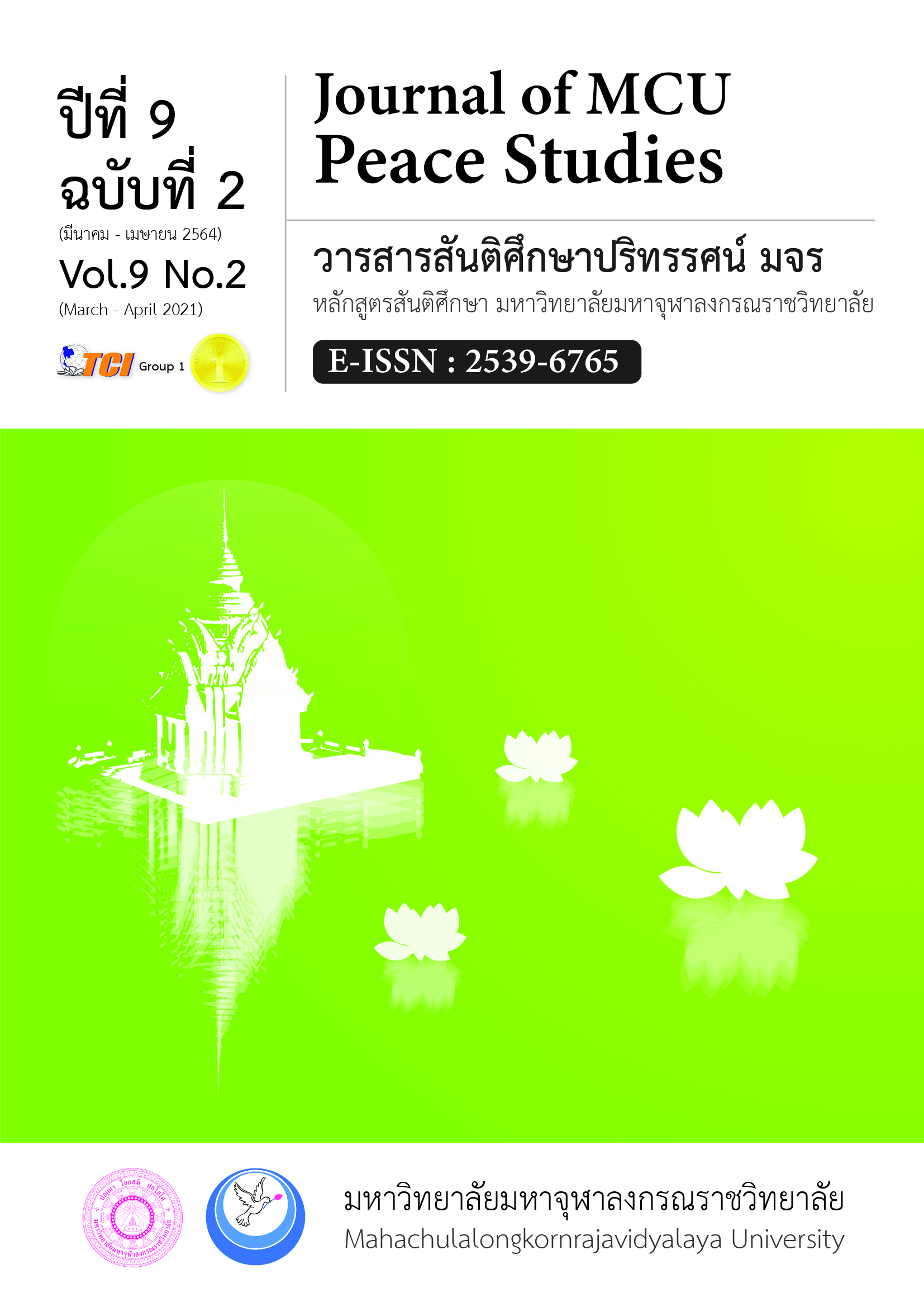Curriculum Development Innovation by Area-based Approach: A Case Study of Local Curriculum of Haripunchai History
Main Article Content
Abstract
This article so that 1) study requirement to local curriculum development of Haripunchai history for high school students, and 2) develop and propriety estimate of local curriculum development of Haripunchai history. This research is mixed methods research. The sample consists of a local administrator, civic society organization, community leader, school administrator, teacher and students total of 30 people and a subject specialist total of 5 people so, the total sample has 35 people. Data collection instruments are 1) An interview without structure 2) local curriculum development of Haripunchai history had developed and 3) An assessment of local curriculum which using qualitative data to analyze with mean and standard deviation. And analyze quantitative data by content analysis.
The result found that 1) Local government organizations, civic society organizations, community and establishment for education need to develop local curriculum development of Haripunchai history because data had created the identity for community and conform to context’s local curriculum to help students for study. And realize to value’s historical community, and 2) local curriculum development of Haripunchai history had developed has 5 component and 7 structural curriculum unit of learning. Which has a development process that can be called “Area-based Approach to Participatory Curriculum Development”. And An assessment local curriculum has optimal.
Article Details
Views and opinions expressed in the articles published by The Journal of MCU Peace Studies, are of responsibility by such authors but not the editors and do not necessarily reflect those of the editors.
References
Academic Department. (1997). Local wisdom and management in primary and high school. Bangkok: Academic department ministry of education.
Buasri, T. (1999). Curriculum: Design and Development. Bangkok: Thanarat.
Buason, R. (2013). Qualitative research of education. Bangkok: V. PRINT (1991) COMPANY LIMITED.
Bunsong, K., & Phetsom, N. (2013). Development of Local Curriculum emphasize on ASEAN. Phetchaburi: Phetchaburi Rajabhat University.
Chanrang, T. (2016). A study of the state and conservation of archaeological. Sites in camadevivamsa scripture. Journal of Graduate Research, 7(1), 137-151.
Chobyod, S. (2019). Local history for sustainable and consolidated local development. King Prajadhipok's Institute Journal, 12(2), 115-138.
Choiekewong, A. (2002). Local curriculum: strategic reformation of education. Bangkok: Krung Thana Phatthana.
Chuaratanaphong, J. (1996). Curriculum development: principles and practices. Bangkok: Aline Press.
Education Council Secretariat. (2017). The national education plan 2017-2036. Bangkok: Prickwan Graphic.
Facer, K. (2009). Towards an area-based curriculum: Manchester curriculum literature review. London: Royal Society for the Arts, Manufacture and Commerce.
Lamphun Provincial Office. (2020). Lamphun development plan 2017-2022 repeat edition in 2020. Lamphun: Lamphun Provincial Office.
Mangkhang, C. (2017). Ideology: social studies curriculum for all. Bangkok: Chulalongkorn University.
Ministry of education. (2002). Guide to learning management for social studies, religion and culture. Bangkok: Organization for the delivery of goods and supplies.
_______. (2010). National Education since 1999. Bangkok: Kurusapa Printing Ladphrao.
National Economic and Social Development Board. (2017). National Economic and Social Development Plan vol 12 2017-2021. Bangkok: Office of the Prime Minister.
Thadtong, K. (2007). Development of Local Curriculum. Bangkok: Kasame Printing.
The National Primary Education Commission. (1999). National Education 1999. Bangkok: The Printing House of the Teachers' Council.
Thongthew, S. (2001). Community strength: a case of community for improve local curriculum. Bangkok: Center development of education faculty of education, Chulalongkorn University.
Sanjit, K. (2009). Ancient Haripunjaya based on archaeological evidence. Nakhon Pathom: Silpakorn University.
Sriwilai, N. (2002). Developing local curriculum on Karen Cloth Weaving subject for the lower secondary classroom at Mae Tuen Wittayakom school, Omkoi district, Chiang Mai province. (Doctoral Dissertation). Chiang Mai University. Chiang Mai.
Supho, P. (2004). Using natural learning resources in school area for developing learning about natural and environment conservation. (Master’s Thesis). Srinakharinwirot University. Bangkok.
Wittayapak, C. (2003). History of the contestation for access to resources of Nan people. Bangkok: The Thailand Research Fund.


